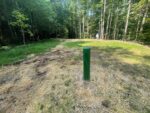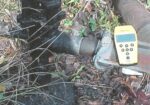- Like
- Digg
- Del
- Tumblr
- VKontakte
- Buffer
- Love This
- Odnoklassniki
- Meneame
- Blogger
- Amazon
- Yahoo Mail
- Gmail
- AOL
- Newsvine
- HackerNews
- Evernote
- MySpace
- Mail.ru
- Viadeo
- Line
- Comments
- Yummly
- SMS
- Viber
- Telegram
- Subscribe
- Skype
- Facebook Messenger
- Kakao
- LiveJournal
- Yammer
- Edgar
- Fintel
- Mix
- Instapaper
- Copy Link
Introduction.
If you own the surface but not the minerals it is a very, very good idea to try to get ownership of the minerals. Even if the ownership of the minerals is divided up (often times in what people call “heirship”) and you can only get ownership of a fraction of the minerals, it is a very good idea to do that. All of the owners of the minerals have to sign any future lease, and you can use that leverage to get surface protections. If a lease has already been signed, it is not so useful and valuable now, but maybe fifty or a hundred years in the future the surface owner will be deeply gratified for the work you do now.
Update #1:
Because of the horizontal/shale drilling tsunami, some surface owners may now start coming into ownership of the minerals under their surface land. That would happen if a driller used a 1986 oil and gas leasing statute to get leases through court for the unknown and unlocatable (or abandoning) owners of a mineral tract under them. Read our explanation of all of this.
Update #2:
The passage of the 2018 Cotenancy Statute changes things a little. Now the driller can drill if the driller gets the owners of 75% of the interests in a single tract of mineral land signed to leases. Find out more on our page about the 2018 Cotenancy Statute. But it is still a good idea to try to get to own an interest in the minerals under you, even if it is only a partial interest, because the drillers might need any mineral share you can get to own in order to get to 75%. And the 2018 Cotenancy Statute and the Unknown and Unlocatable Interest Owner Act that was part of the same legislation gives you another way to get to own the minerals (after drilling has taken place under you).
Who owns your minerals?
Any attempt to get ownership of the minerals under you starts with knowing the name of the person who owns the minerals. This is NOT a simple task. Appendix D of the West Virginia Surface Owners’ Guide to Oil and Gas tells you how to try to find out. It starts with some suggestions like, “Ask around.” If the simple solutions do not work, be prepared, because it is time consuming, confusing and tedious work to use available records to find out. Also there are some Internet resources that have come on line since Appendix D was written that may help. If your county has tax records on line, sometimes you can get luck by searching the data base parcel description by the exact acres etc. etc. There is a statewide Internet service that you can use to try this, but you have to pay a fee to get to this level of data. In the end you may want to hire an abstractor or lawyer to do an abstractor title examination.
Purchasing them for the mineral owner.
You can try to simply purchase a share of the minerals from one of the owners of the minerals under your surface. First you have to find out who they are as explained above. If you can find out their names, you can get their addresses from the sheriff’s records where they send the tax bill. It is hard to tell how much you should pay. With the new Marcellus Shale boom that is going on as this is written in 2010 some mineral owners may want to hold on thinking their ship has come in. But you can try to persuade them that their share is very small and they might do better to get a little cash now. Or you can agree to let them keep the royalty rights (or a share of the) but deed to you the remaining ownership interest (including the right to sign the leases). Or you can just appeal to their good nature. If they agree you will need a lawyer who does title work or who is familiar with oil and gas issues to prepare the deed.
Purchasing minerals if they go for taxes.
If you cannot persuade a mineral owner to sell you their piece there is one other option that might work for you. Often with these fractured ownerships, one of them will not get or not pay the real property taxes.
If property taxes are not paid on minerals, then just like when taxes are not paid on surface land, the minerals (or technically, the tax lien on the minerals) get sold by the sheriff for nonpayment of taxes. You can bid at the public sale. Again you have to start by finding the names of the minerals owners as explained above. And if you know that you have to know when the sale will occur. Notice of the tax sales get posted in the local paper in a long list of names. The notices of tax sales appear in the local newspaper in October or November. You will have to check every day for the notice and then look down the long list for the tax district you are in for the names you have identified.
However, there is something you can do so that you will be notified by mail if the minerals under your land are sold for taxes! (See West Virginia Code §11A-3-2(b)(4).) This does away with the need to check the papers and the chance you will miss the names in the papers.
As always you first need to find out who owns the minerals as explained above. Then you need to go to the sheriff’s office and fill out a form called “SALES LISTING FORM” of the State Tax Commissioner of West Virginia.
This form is filled out using information available in the County Clerk’s record room, the assessor’s office and/or the sheriff’s office. (You may already have some of the information from finding out who owns the minerals.) The form is then filed in the sheriff’s office (or in some counties the county clerk’s office first). The people in these offices will help you some, and they may come up with the information and answers you need. But in the end they cannot do the work of an abstractor or attorney if that is what is needed in your case.
We do not have extensive experience using this form. The information in this index was gained from talking to people in the State Tax Commissioner’s Office Real Property Section and the employees in the Kanawha County Courthouse. Your county may operate somewhat differently. We did find that you can get the best information on how this works in your county by talking to the person in the sheriff’s office who is in charge of preparing the notices that get mailed out when taxes are delinquent on property.
The form we have seen is one of those forms where you press hard to make 4 copies. So you may need to fill it out at the courthouse. If you live out of state or some distance away, you should probably call the Courthouse and ask them to send you the form to fill out and return in the mail. You may need a number of copies, one for each mineral owner of the tract or tracts under you.
Here is a sample of how to fill in the form. Note that the form has several other uses so many of the blanks do not need filled in. Note also that the other uses of the form are much more common so the employees at the counters in the Courthouse may not be familiar with this use and you will have to explain what you are doing. It may help if you point out the “Surface Owner’s Rights” checkoff under “INTEREST IN PROPERTY” on the form. And maybe show them a printout of this web page. And finally note that the form gets revised from time to time so it may not look exactly like this one.
If you have not gotten the “Map” number and “Parcel No” information already while finding out who owns the minerals, and if the Courthouse wants it, then you need to look in the “Land Book” under the name of the mineral owner and the property description. In some counties the land books are kept in the county clerk’s record room, but the assessor may also have them. The State Tax Department’s property tax division tells us that mineral maps usually have the number 9999. Note also that not all counties have mineral tax maps and even then not all mineral interests may appear on the maps. So there may not be a map and parcel number to put in those blanks.
The “Mineral I.D. Number” is very important and the form will probably not be accepted without it. It should be in the Land Book under the mineral owner’s name and property description.
Note the instructions on the sample form on how to fill in your name and address.
Be sure to check the “Surface Owner’s Rights” line under “INTEREST IN PROPERTY”. We were told by one county that you did not need the Deed Book and page number since you will have the Account/Mineral I.D. number, but some counties may require it.
And Finally.
We have not had much experience or much feedback from people using this system. Please let us know of any problems or solutions you run into so we can better help the next person.
Prepared by David B. McMahon • Attorney at Law




